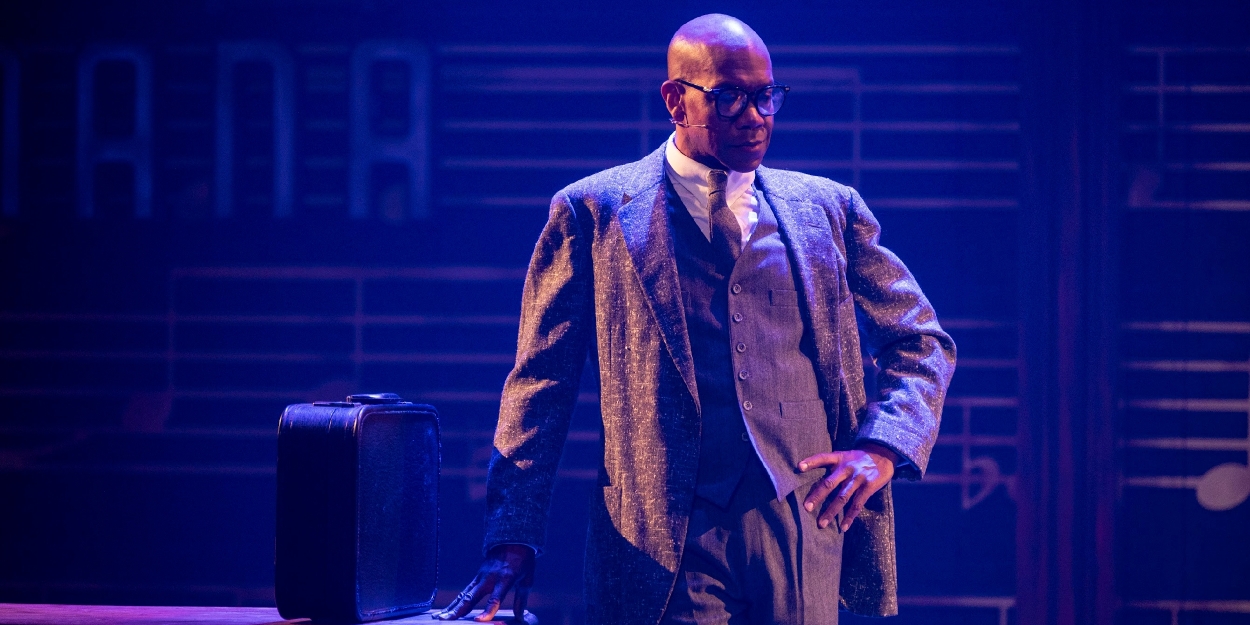Review: BILLY STRAYHORN: SOMETHING TO LIVE FOR Investigates the Heart of Jazz at Pittsburgh Public Theater
This new musical runs September 19-October 11 at the O'Reilly Theater

There's a popular witticism that the musical biopic was almost killed by Walk Hard, which skewered each and every convention of the genre so thoroughly that everything since has just seemed like a rehash of Walk Hard. The same thing has been said for a while of Jersey Boys and Beautiful: after those told the "rise, fall, leave a legacy" story, what's left besides changing the names and the songs? Thankfully, librettists Rob Zellers and Kent Gash have crafted a clever, artful and occasionally genuinely surprising new musical around Pittsburgh music royalty Billy Strayhorn, whose life, love, and friendly-ish rivalry with mentor Duke Ellington is illuminated in Billy Strayhorn: Something to Live For.
Billy (Darius de Haas) is a Pittsburgh-area teenager dealing with the undeniable burdens of growing up black, gay and nerdy. Different from everyone he meets, he finds solace in listening to music and writing it. This talent for composition and arrangement catches the attention of Duke Ellington himself (J.D. Mollison), who enlists Billy as an arranger, composer and session pianist. The great Sir Duke prefers to hog the credit for himself, which publicity-averse Billy rarely minds, and he isn't bothered by Billy's romance with classical pianist Aaron Bridgers (Charl Brown), but conflict arises when Billy's love of the serious avant-garde clashes with Duke's crowd-pleasing instincts. How will Billy hold the facets of himself together in a world telling he he can't love who he loves or write what he hears?
The score, mostly new arrangements of jazz, gospel and big-band classics that Strayhorn and Ellington worked on, swims well between cabaret numbers, whole-cast rave-ups, torch songs and the occasional slightly anachronistic power ballad. Orchestrator Bruce Coughlin, who has worked on projects as diverse as The Light in the Piazza, Urinetown and the legendary Metallica S&M symphonic albums, keeps the small band sounding like a big one throughout. The nine-person cast also does heavy duty, with almost everyone but de Haas playing multiple roles. At the center of this maelstrom is Darius de Haas, threading the needle between Billy's meekness and flamboyance, his larger than life and smaller than life attributes. His pain is an aching throb throughout, yet his wit and comic timing perpetually shine, to say nothing of his justifiably-famous voice.
J.D. Mollison exudes charm and cool as the debonair Duke, whose good-times attitude and savoir faire hides an exacting taskmaster side. Mollison gets one of the show's coolest showcases, a hand percussion, beatbox and dance feature in which he symbolically becomes a jazz drum solo to echo his frustration during a career setback. While Charl Brown must play the straight man, pun slightly intended, in his role as Billy's partner, he gets two moments of absolutely ebullient joy to burst out of that stock character: a song and dance feature as an athletic train conductor in Act 1, and then a swinging comic goodbye song in Act 2. Arielle Roberts doubles nimbly as two famous ladies close to Billy, Lena Horne and Billie Holiday. One of those is a comic role, and the other is tragic: guess which.
Director Kent Gash and choreographer Dell Howlett keep the cast in constant motion through the O'Reilly's nontraditional space, using aisles, balconies and all corners of the house as staging areas. The show's greatest coup de theatre comes in Act 2, as Billy nears a creative breakdown that threatens a physical and mental breakdown as well. In a vision, he is visited by his mother and a figure in white that can only be interpreted as the Angel of Death, who physically breaks the bonds holding Billy to the earth as she dances. It's a moment of genuinely breathtaking power, and only when it ends do we realize what we've seen: not the transition from life to death, but the transition from creative death to creative rebirth. All too often, people have used creativity as a visual metaphor for death, but this is the first time I've seen death used as a metaphor for the creative process instead.
If the show has any notable flaw, it's that the ending drags on a bit: after that "Come Sunday" sequence described above, the show continues to unfold for another half hour or so, but we already feel like we've seen the finale. Still, it's obviously building towards de Haas singing "Lush Live" as the big finish, and his nuanced delivery brings down the house. The Billy Strayhorn story may be known to jazz heads, but it's a fiercly human narrative that deserves to be heard after years in Ellington's shadows. Hopefully, this show will put Billy Strayhorn back in the narrative... and double hopefully this cast and orchestra will record a cast album so I can hear these performances again!
Reader Reviews

Videos

